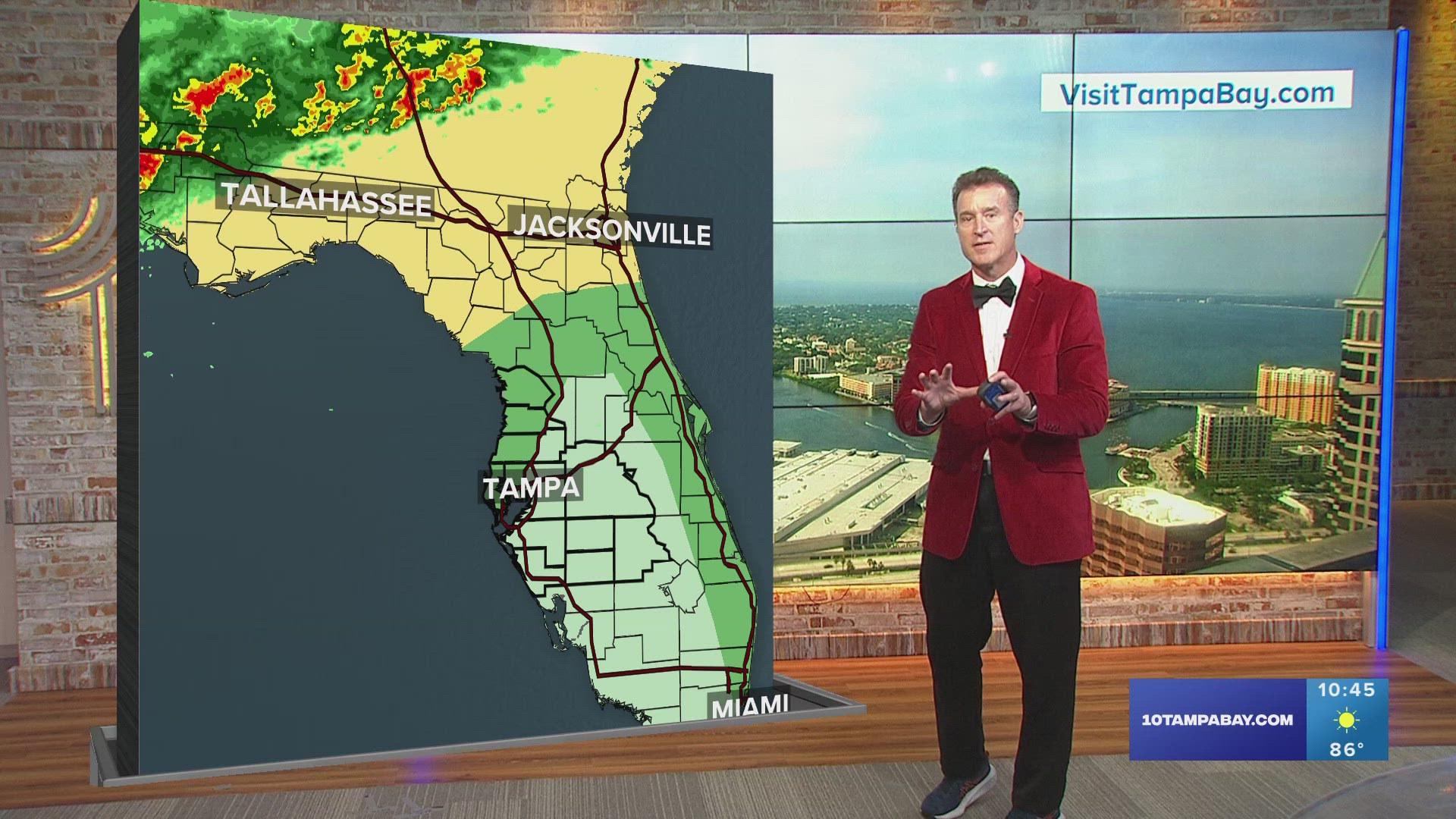After declining sharply last spring, global emissions of greenhouse gases ended 2020 by exceeding pre-pandemic levels, according to International Energy Agency (IEA).
"Climate change has not stopped for COVID-19," the World Meteorological Organization noted in a September report.
With a screeching halt of the movement of people last spring, as many countries imposed strict restrictions on travel, socializing and commuting to slow the spread of the coronavirus, emissions in April during the peak period of the lockdown were down 17 percent from a year ago, the report noted.
Overall, global carbon emissions from energy use dropped 8 percent in 2020. Yale School of the Environment says that’s a decline equal to two-and-a-half years of energy sector emissions.
However, by the end of the year, emissions spiked. This week, the IEA, a Paris-based intergovernmental agency, released a new report that shows emissions from the production and use of oil, gas and coal were 2 percent higher in December 2020 than a year earlier.
The Paris-based intergovernmental agency said a resurgence in economic activity, coupled with a lack of clean energy policies, means many countries are now seeing higher emissions than before the coronavirus pandemic.
According to CBS News, Fatih Birol, the IEA executive director, said, "The rebound in global carbon emissions toward the end of last year is a stark warning that not enough is being done to accelerate clean energy transitions worldwide. If governments don't move quickly with the right energy policies, this could put at risk the world's historic opportunity to make 2019 the definitive peak in global emissions."
The energy research group BloombergNEF (Bloomberg New Energy Finance) says in its annual New Energy Outlook that emissions will rise gradually from now to 2027 as the economy recovers -- but will then decline 0.7 percent year-to-year until 2050.
The BloombergNEF report adds that wind and solar energy, alongside battery storage, will supply 56 percent of the world’s electricity demand by 2050, with some countries generating as much as 80 percent of demand.
Despite this projected progress, however, the world will still be on track to warm 3.3 degrees Celsius by 2100. Scientists say that the Paris climate accord's goal is to keep average temperatures from rising by 2 degrees Celsius — ideally no more than 1.5 Celsius.
To keep global warming well below 2 degrees C, the report concluded, emissions need to fall 10 times faster, at 6 percent per year until 2050.
BloombergNEF adds that it would require investing as much as $130 trillion in clean energy and green hydrogen technology between now and 2050, including having 100,000 terawatt-hours of installed renewable capacity — six to eight times what currently exists. To limit warming to 1.5 degrees C, the required emissions reduction rate would be 10 percent.
"The next 10 years will be crucial for the energy transition,” Jon Moore, CEO of BNEF, said in a statement. “There are three key things that we will need to see: accelerated deployment of wind and PV (solar); faster consumer uptake in electric vehicles, small-scale renewables, and low-carbon heating technology, such as heat pumps; and scaled-up development and deployment of zero-carbon fuels.”
Keep in mind that transportation accounts for a relatively small fraction of the greenhouse gases produced by people. Transportation creates about 14 percent of emissions globally, according to the United Nations. Other areas, such as agriculture and buildings, also produce emissions, and they largely continued to function as normal during the lockdowns.
If you’re new to the global warming discussion, here are the key points you want to know.
What is Global Warming? Global warming is the gradual heating of Earth's surface, oceans and atmosphere, is caused by human activity, primarily the burning of fossil fuels that pump carbon dioxide (CO2), methane and other greenhouse gases into the atmosphere.
Global warming is politically controversial. It’s an ongoing dispute about the effects of humans on global climate and about what policies should be implemented to avoid possible undesirable effects of climate change. The current scientific consensus on climate change is that recent warming indicates a fairly stable long-term trend, that the trend is largely human-caused, and that serious damage may result at some future date if steps are not taken to halt the trend.
Science Daily says, “Mainstream scientific organizations worldwide agree hat most of the observed warming over the last 50 years is likely to have been due to the human-caused increase in greenhouse gas concentrations. However, there is also a small but vocal number of scientists in climate and climate-related fields that disagree with the consensus view.”
A changing environment. "We can observe this happening in real-time in many places. Ice is melting in both polar ice caps and mountain glaciers. Lakes around the world, including Lake Superior, are warming rapidly — in some cases faster than the surrounding environment.
Animals are changing migration patterns and plants are changing the dates of activity," such as trees budding their leaves earlier in the spring and dropping them later in the fall, Josef Werne, a professor of geology and environmental science at the University of Pittsburgh, told Live Science.
The average global temperature has increased by about 1.4 degrees Fahrenheit (0.8 degrees Celsius) over the past 100 years, according to the National Oceanic and Atmospheric Administration (NOAA).
Since record-keeping began in 1895, the hottest year on record worldwide was 2016 until 2020 matched it last year, according to a report by NASA.
Extreme weather events. Extreme weather is an effect of global warming. While experiencing some of the hottest summers on record, much of the United States has also been experiencing colder-than-normal winters. Changes in climate can cause the polar jet stream — the boundary between the cold North Pole air and the warm equatorial air — to migrate south, bringing with it cold, Arctic air. This is why some states can have a sudden cold snap or colder-than-normal winter, even during the long-term trend of global warming.
Stronger hurricanes. An anthropogenic (human-caused) climate change study found a substantial regional and global increase in the proportion of the strongest hurricanes – category 4 and 5 storms.
“We conclude that since 1975 there has been a substantial and observable regional and global increase in the proportion of Cat 4-5 hurricanes of 25-30 percent per °C of anthropogenic global warming.”
Dirtier air. Rising temperatures also worsen air pollution by increasing ground-level ozone, which is created when pollution from cars, factories, and other sources react to sunlight and heat. Ground-level ozone is the main component of smog, and the hotter things get, the more of it we have.
Dirtier air is linked to higher hospital admission rates and higher death rates for asthmatics. It worsens the health of people suffering from cardiac or pulmonary disease. And warmer temperatures also significantly increase airborne pollen, which is bad news for those who suffer from hay fever and other allergies.
More acidic oceans. The earth's marine ecosystems are under pressure as a result of climate change. Oceans are becoming more acidic, due in large part to their absorption of some of our excess emissions. As this acidification accelerates, it poses a serious threat to underwater life, particularly creatures with calcium carbonate shells or skeletons, including mollusks, crabs, and corals.
Higher sea levels The polar regions are particularly vulnerable to a warming atmosphere. Average temperatures in the Arctic are rising twice as fast as they are elsewhere on earth, and the world's ice sheets are melting fast. By 2100, it's estimated our oceans will be one-to-four feet higher, threatening coastal systems and low-lying areas, including entire island nations and the world's largest cities, including New York, Los Angeles, Miami and the Tampa Bay area.
- What to know about Tampa's federal COVID-19 vaccine site
- School resource officer fired after body-camera catches him saying N-word, Tampa police say
- Patients 'extremely vulnerable to COVID-19' will need this form to get a vaccine
- Tampa family adopts baby born with 'half a heart'
- Tom Brady appears on the Late Late Show with James Corden
- Am I eligible to receive the COVID-19 vaccine in Florida?
►Breaking news and weather alerts: Get the free 10 Tampa Bay app
►Stay In the Know! Sign up now for the Brightside Blend Newsletter



